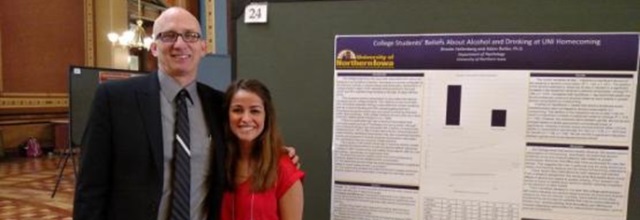Honors Program Theses
Award/Availability
Open Access Honors Program Thesis
First Advisor
Kavita R. Dhanwada
Keywords
Atrazine--Physiological effect; Hepatoma;
Abstract
Atrazine is one of the most widely used herbicides in the United States. It is frequently used for general weed control on both industrial and agricultural land. However, atrazine has been associated with many harmful non-target effects in animals and humans. Due to its prevalence in the environment, the United States Environmental Protection Agency (USEP A) has set the maximal contaminant level of atrazine in drinking water at 3 ppb (USEP A, 2003 ). One of the non-target effects of atrazine is slowed growth of both normal and immortalized human cells. Previous work from our lab demonstrated that exposing normal human fibroblasts to 0.8 parts per billion (ppb) or 0.8 µg/L of atrazine for 72 hours caused a statistically significant decrease in cell growth compared to unexposed cells (Dhanwada et al., 2003) and it took 12.5 ppb atrazine to show a statistically significant decrease in immortalized human hepatoma HepG2 cell growth (Powell and Dhanwada, 2006).
To understand the observed slow down in cell growth after atrazine exposure, the current study attempted to determine if the expression of cell cycle proteins that regulate passage through the cell cycle is being altered in atrazine exposed cells compared to unexposed cells. Three cyclins were studied: A, B, and E. Cyclin expression in atrazine-exposed cells (50, 100, 300, 500ppb) compared to control (0 ppb) HepG2 cells was quantitated under three experimental conditions, 24-hour atrazine exposure, 48-hour atrazine exposure, and 24 hour cell synchronization followed by 24-hour atrazine exposure. After the indicated time, cells were harvested for nuclear proteins, and Western blot analysis was performed.
The results of the current study show that cyclin A, B, and E expression patterns are altered in atrazine-exposed cells compared to control depending on the time of atrazine exposure. Results suggested that either a G1 or a G2 block in the cell cycle was occurring upon atrazine exposure.
Year of Submission
2006
Department
Department of Biology
University Honors Designation
A thesis submitted in partial fulfillment of the requirements for the designation University Honors
Date Original
12-2006
Object Description
1 PDF file (viii, 82 pages)
Copyright
©2006 April Dawn Rand
Language
en
File Format
application/pdf
Recommended Citation
Rand, April Dawn, "Cell Cycle Cyclin Expression of Atrazine Treated HepG2 Cells Using Western Blot Analysis" (2006). Honors Program Theses. 639.
https://scholarworks.uni.edu/hpt/639




Comments
If you are the rightful copyright holder of this thesis and wish to have it removed from the Open Access Collection, please submit a request to scholarworks@uni.edu and include clear identification of the work, preferably with URL.